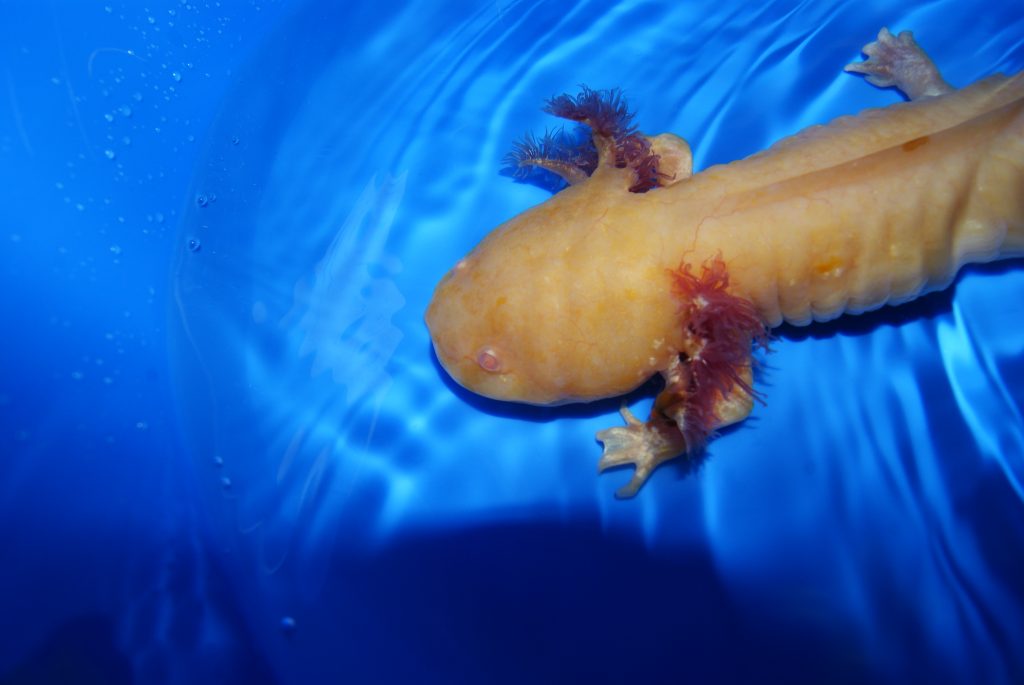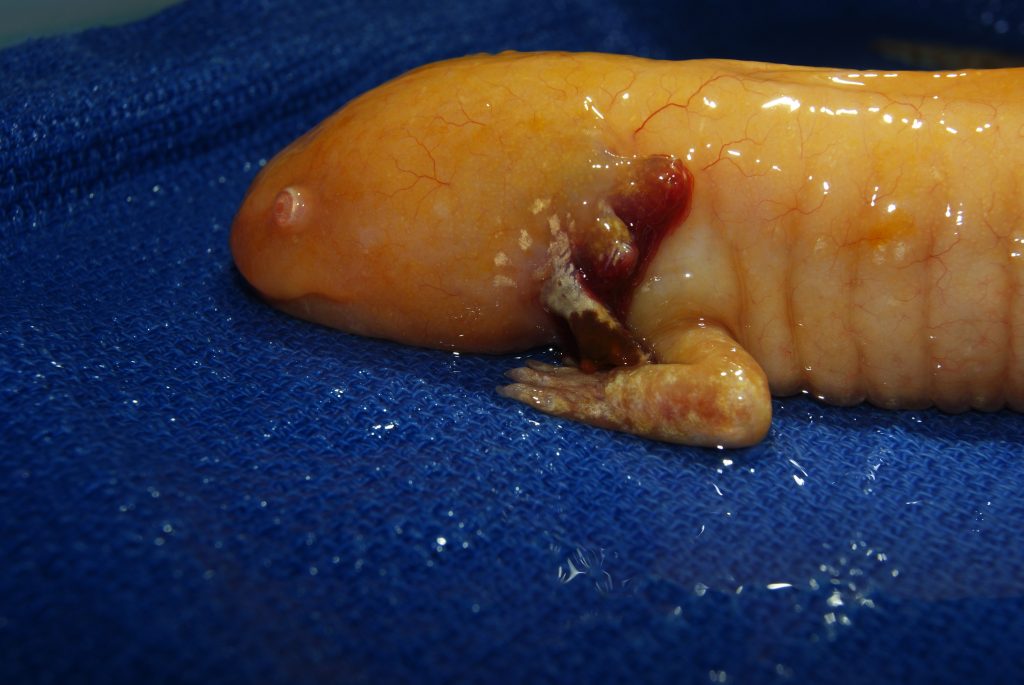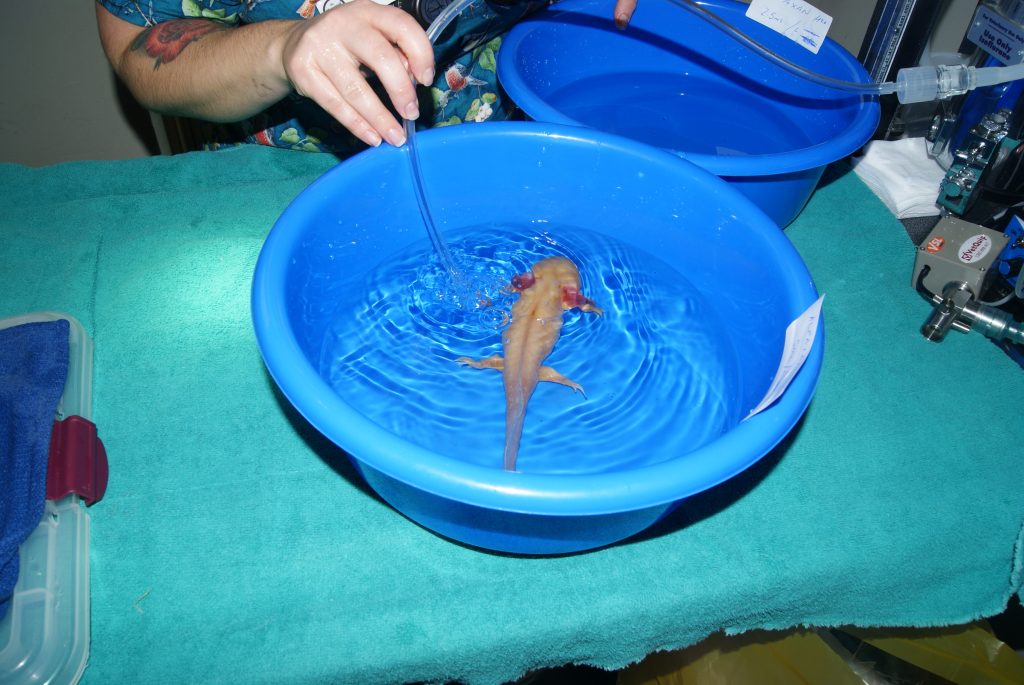Axolotls are increasing in popularity, we have been seeing more people bring their axolotl into our veterinary clinics for various problems. A lot of the problems we seen are related to incorrect husbandry. People don’t realise that axolotls require a specialized set up to ensure they can live a healthy and happy life. In this article we bust a few myths about axolotls. And discuss some interesting facts and also looks at a case we had in recently that required surgery.

Myth: Axolotls are fish
Many people refer to Axolotls as Mexican walking fish. Although they aren’t even a fish! They are amphibians and are more similar to a frog than a fish.
Myth: Axolotls like warm water
Axolotls come from cool, still, fresh water mountain lakes in parts of Mexico. They like their water temperature to be between 17-18oC and can develop serious problems if their water becomes over-heated. This is particularly problematic in some warmer parts of Australia as it can be difficult to keep the water cold enough for them. It is very important to monitor the water temperature of your axolotl aquarium closely.
Fun Facts!
Axolotls have amazing regenerative ability where in some cases they can completely regrow their appendages if they are accidently damaged or cut off. Doctors are looking into how Axolotls re grow their body parts with hope that one day this technology can help humans.
Axolotls can breathe using four different mechanisms! They can use their lungs to ‘gulp’ air from the surface of their tank as well as using their gills, buccopharyngeal (throat) area and skin to absorb oxygen from water.
Axolotls are actually carnivores and like to eat a range of fish, crustaceans and insects.
Axel the axolotl
Axel came in to see Dr James as he had developed a lump on one of his gills. After examining Axel, it was determined that the lump needed to be removed. Axel was anesthetised during this process, this was done by adding a solution to the water.

We achieved this with Axel by using a number of different bathes that all had different concentrations of the anaesthetic solution. This gave us a the best chance possible to remove the lump. The lump was from Axel, and it was determined that it needed to be sent to the lab to be tested.

Unfortunately the analysis on the lump showed that it was an aggressive form of cancer. The good news is that Axel is going well and we are hoping that he will continue to do so for many years to come.
Article written by Dr James Haberfield of The Unusual Pet Vets

